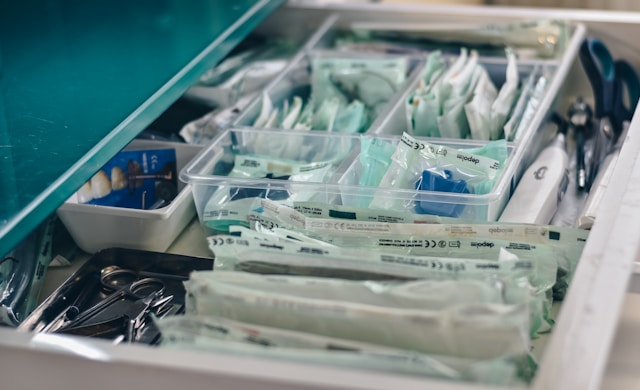The Reality Behind Bard PowerPort: Complications and Migration Exposed

For over 20 years, Bard PowerPort has assisted many receiving treatment for chronic conditions by facilitating drug and fluid delivery without repeated injections. However, soon after their approval, complications arose that Bard was aware of but did not disclose. While serving an important medical purpose, some PowerPort devices fragmented and migrated internally, risking patient safety.
As legal actions have now been brought to light, the full scope of issues has not been transparently communicated. It is important we gain a more complete understanding of what transpired to help ensure history does not repeat.
This article aims to uncover the facts about PowerPort complications and shed light on an important product history that deserves a thorough review.
Bard PowerPort Overview
An implantable port device or Port-a-Catheter device is a medical tool used for intravenous access and delivery of fluids or medicines directly into the bloodstream. One such device is the BardPort, manufactured by Bard Access Systems.
The BardPort has a housing made of titanium and plastic materials. It uses a specialized polyurethane blend called ChronoFlex AL, which contains polyurethane and barium sulfate. There is a silicone septum for accessing the port and catheters for fluid/medication delivery and blood withdrawal.
The procedure to insert the BardPort involves a minor surgery where it is placed underneath the skin, usually on the chest or arm.
A catheter connected to the port is threaded into a large central vein to provide direct intravenous access. This allows medicines like chemotherapy to be administered into the bloodstream safely and easily through the port on an outpatient basis.
The port system offers clinicians and patients a convenient long-term alternative to repeated intravenous access through veins in the arm. Medications, fluids, blood tests, and other treatments can be delivered or performed through the port using a non-coring needle on an as-needed basis.
Health Complications and Injuries Caused by Bard PowerPort
Some Bard PowerPort devices have been associated with potential problems that could harm patients’ health. One issue is catheter migration, which can happen due to factors like a patient’s movements over time or changes in pressure inside the body.
Port-a-Catheter migration symptoms include pain or swelling near the port and changes in how the catheter works for infusions or withdrawals. Additionally, individuals may experience a sense that the port has shifted under the skin or discomfort in the chest or neck.
Migration is risky because it could damage blood vessels or cause life-threatening blood clots, requiring urgent medical attention. Sometimes, surgery is needed to remove the migrated Bard PowerPort catheter and treat any related injuries.
The fracturing of the Bard PowerPort catheter has been linked to severe and enduring pain. It is also associated with other serious complications, including major blood clots, deep vein thrombosis, and fluid buildup around the heart or lungs.
Additionally, it can lead to heart attack, internal bleeding, lung bleeding, abnormal swelling in a lung artery, blood clots traveling to the lungs, rapid heartbeat, infection, and nerve damage or injury to blood vessels.
TorHoerman Law states that due to these potential health risks, certain patients have initiated lawsuits against Bard Access Systems Inc., the manufacturer of Bard PowerPort ports. These lawsuits allege that the devices possess defects capable of causing catheter failure and resulting in adverse health effects.
While implantable ports can help certain patients needing long-term intravenous access if used correctly, they should only be implanted and monitored by a licensed healthcare provider.
Consolidation of Federal Bard Port Lawsuits
Several personal injury lawsuits had been filed across various federal district courts in the United States, claiming that certain port devices manufactured by C.R. Bard caused health complications or injuries.
On August 8th, 2023, the Judicial Panel on Multidistrict Litigation (JPML) approved consolidating these federal cases into a multidistrict litigation (MDL) proceeding. This MDL will be centralized in one district court for coordinated pretrial proceedings.
In its August 8th order, the JPML decided to transfer all federal BardPort lawsuits to the United States District Court for the District of Arizona. The panel selected Arizona as the transferee district because C.R. Bard maintained a significant corporate presence there, and relevant witnesses were likely located in that jurisdiction.
The order stated, “Defendants represent that Bard Access Systems has a significant business presence in this district and that relevant witnesses will be located there.
The consolidated MDL proceeding concerning the Bard Port lawsuits will be overseen by Judge David Campbell of the District of Arizona.
According to online legal resources, Judge Campbell had previously presided over an MDL involving approximately 8,000 injury cases pertaining to defective inferior vena cava filters manufactured by C.R. Bard.
FAQs
- Is there a potential for nerve damage from a port?
A: There’s a possibility that either the port itself or the surgical procedure for its insertion could lead to peripheral neuropathy, a condition where some peripheral nerves malfunction. Treatment outcomes vary, with some cases responding better than others.
- What is the recommended infusion rate for PowerPort?
A: These ports are designed to inject contrast media using power injectable needles. It’s best to use needles that are 19G or 20G without a coring feature at a maximum infusion rate of 5 mL/s or 22G without coring at a maximum rate of 2 mL/s.
- What is the primary issue associated with ports?
A: Complications related to port systems are categorized into two groups: early complications (within 30 days post-implantation) and delayed complications (occurring after 30 days). These complications affect up to 33% of cases. The most frequent complications include infection and catheter-related thrombosis.
Implantable ports have helped many, and there is no denying that. However, this sobering history shows the importance of transparency, accountability, and putting patient safety above all else.
Now, it’s in the hands of all stakeholders—manufacturers, healthcare providers, and regulators—to glean lessons from these experiences. They must collaborate to set standards that guarantee these vital devices harbor no hidden risks.
Our shared goal must be giving patients full confidence that the treatments prolonging their lives will not endanger them in unseen ways.






